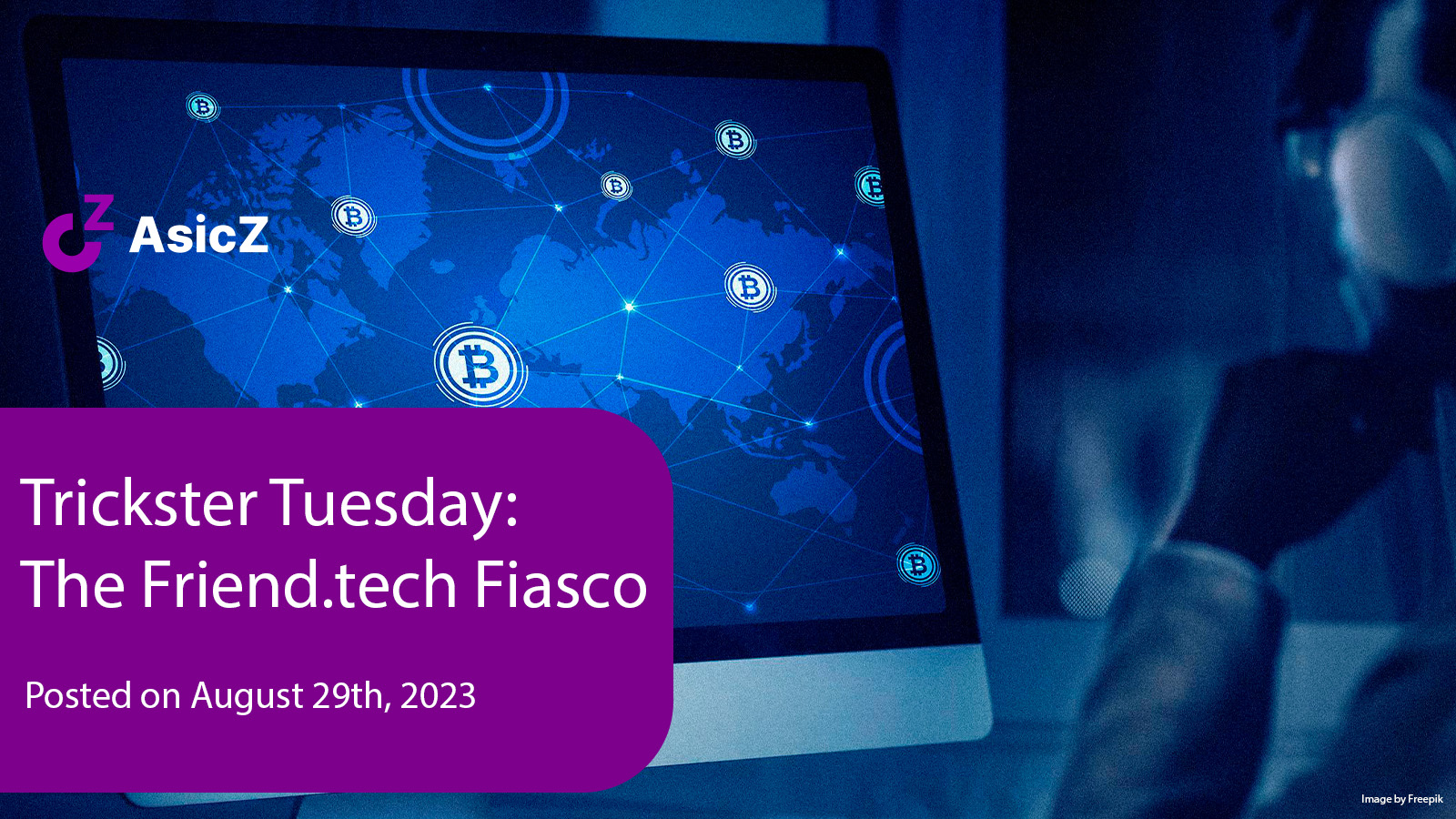Welcome to another riveting edition of Trickster Tuesday, where we dissect the most captivating and perplexing stories in the cryptoverse. This week, we’re diving deep into the enigmatic rise and fall of Friend.tech. This decentralized social media platform promised to revolutionize the way we interact online. With its meteoric rise and equally swift descent, Friend.tech has left many scratching their heads. But the real tricksters in this tale are not who you might think. So, let’s unravel this complex narrative and explore the lessons it holds for us.
The Genesis of Friend.tech
When Friend.tech burst onto the scene, it was hailed as a game-changer in the realm of social media. Built on Coinbase’s layer-2 Base network, the platform offered a unique feature: the tokenization of social media accounts. Users could create “keys,” which were essentially tokenized versions of their accounts. These keys could be bought and sold, granting the buyer exclusive access to private chat rooms and content from the seller. The platform wasn’t just a hit among crypto enthusiasts; it also attracted a wide range of content creators, from OnlyFans stars to crypto influencers. The platform even integrated features like photo sharing, making it a one-stop-shop for digital interactions.
The Hype Train Leaves the Station
The initial buzz around Friend.tech was electrifying. Within the first 24 hours of its beta launch, the platform generated over $1 million in fees. It even outperformed established crypto networks like Uniswap and Bitcoin in terms of user activity. The platform was touted as the next big thing in social media, with the promise of empowering users to monetize their online presence. This was not just another social media platform; it was seen as a revolutionary step towards democratizing online interactions.
The Allure of Tokenization
Tokenization was the cornerstone of Friend.tech’s appeal. Users could tokenize their social media presence, turning themselves into tradable assets. This feature was particularly appealing to content creators, who saw it as a new revenue stream. The platform even enabled the sending of photos, adding another layer of functionality that attracted a new wave of users. This feature was so groundbreaking that it seemed like Friend.tech was on the verge of redefining social media as we know it. The allure of tokenization was so strong that it overshadowed the platform’s other features.
The Real Tricksters: Influencers Preying on Followers
While Friend.tech as a platform had its own set of issues, the real tricksters in this tale are the influencers who exploited the platform’s features to prey on their followers. These influencers tokenized their social media presence and sold “keys” to their followers, promising exclusive content and interactions. However, many failed to deliver on these promises, leaving their followers feeling cheated and disillusioned. This predatory behavior has raised ethical questions about the role of influencers in decentralized platforms and serves as a warning for followers to tread carefully.
Cracks in the Foundation
Despite the initial euphoria, Friend.tech began to show signs of structural weakness. Users raised concerns about the platform’s lack of a clear privacy policy, and there were questions about its compliance with securities regulations. These weren’t just minor issues; they were fundamental flaws that cast a shadow over the platform’s long-term viability. The platform’s structural issues were so severe that they led to a decline in user trust, further exacerbating its downfall.
The Downward Spiral
The decline of Friend.tech was as dramatic as its rise. User numbers fell by a staggering 80%, and its earnings plummeted by over 70% from their peak. Critics were quick to label the platform as “dead,” citing a sudden decline in key performance indicators like activity, inflows, and volume. The platform’s downfall serves as a stark reminder of the volatile nature of the cryptoverse, where fortunes can change overnight.
Lessons to Be Learned
The story of Friend.tech serves as a multi-layered cautionary tale. On one hand, it highlights the importance of having a clear roadmap, transparent policies, and a sustainable business model for any platform. On the other hand, it exposes the ethical quandaries presented by influencers who misuse such platforms for personal gain. The tale underscores the need for both users and developers to tread carefully in the crypto industry, where the allure of quick profits can often overshadow ethical considerations.
As we wrap up this week’s Trickster Tuesday, the story of Friend.tech serves as a multi-layered cautionary tale. It highlights the pitfalls of a platform that promised too much too soon, and exposes the ethical quandaries presented by influencers who misuse such platforms. In the ever-evolving landscape of blockchain technology, staying informed is not just an option; it’s a necessity. For those keen on staying ahead of the curve, our blog features daily articles that cover the latest news. If you’re looking to start your mining journey or optimize existing operations, AsicZ.com offers a wide range of volume mining hardware at competitive prices. And, if you’re looking for a sustainable way to mine, our industry-leading MaaS (Mining as a Service) comes with power rates lower than .03/kWh. Trust AsicZ to be your reliable partner in the mining industry, with everything ASIC from A-Z.
References
- What is Friend.tech? The Viral Crypto Social Media App, Mashable.
- What Is Friend.Tech? Decentralised Social Media App Dubbed ‘Dead’ Despite Making Waves Amid Scrutiny, CCN.
- Friend.tech Pronounced Dead: Inflows & Activity Declines, Cointelegraph.
- Friend.tech Threatens to Punish Users for Using Copycat Apps, Cointelegraph.

